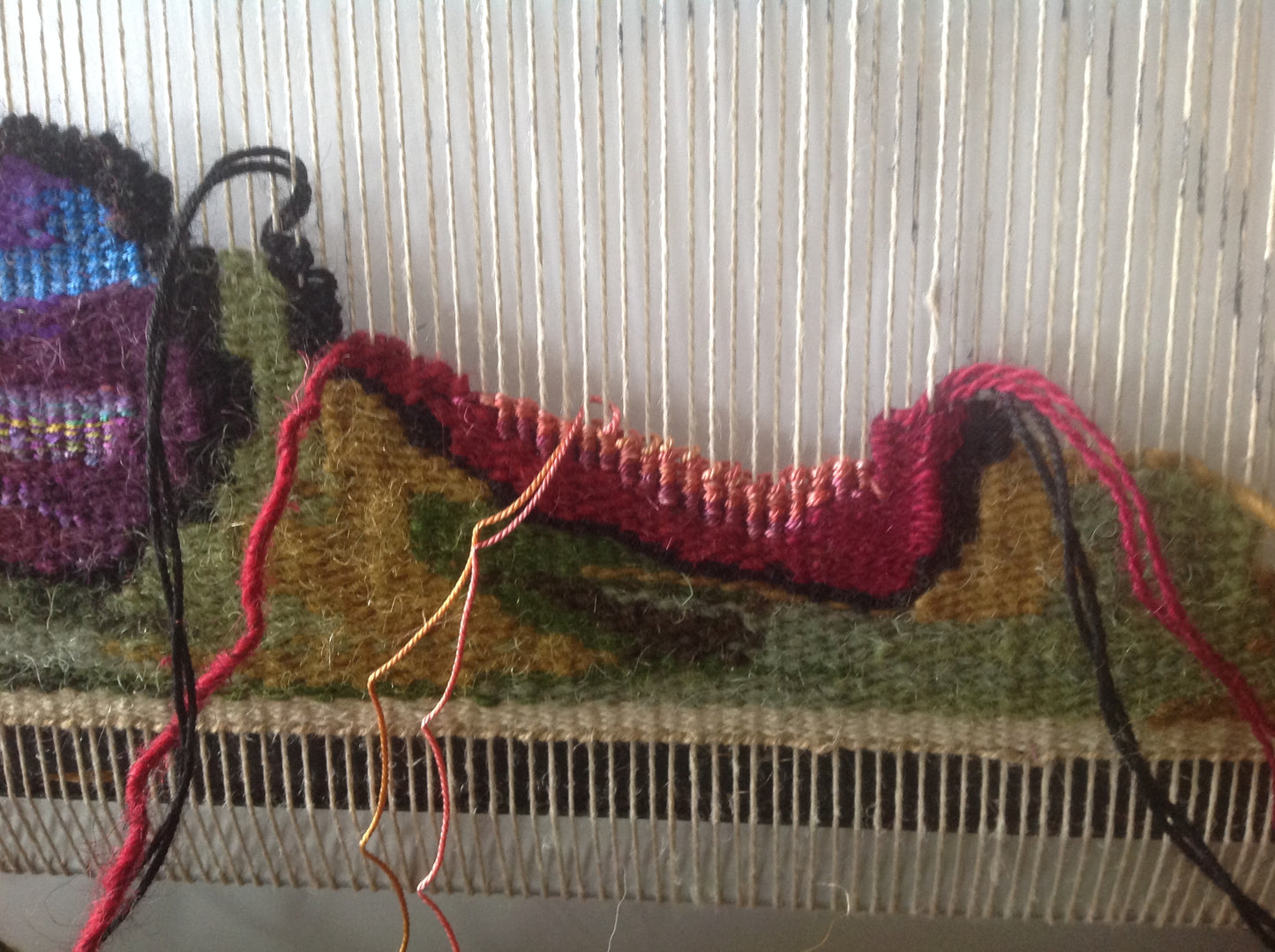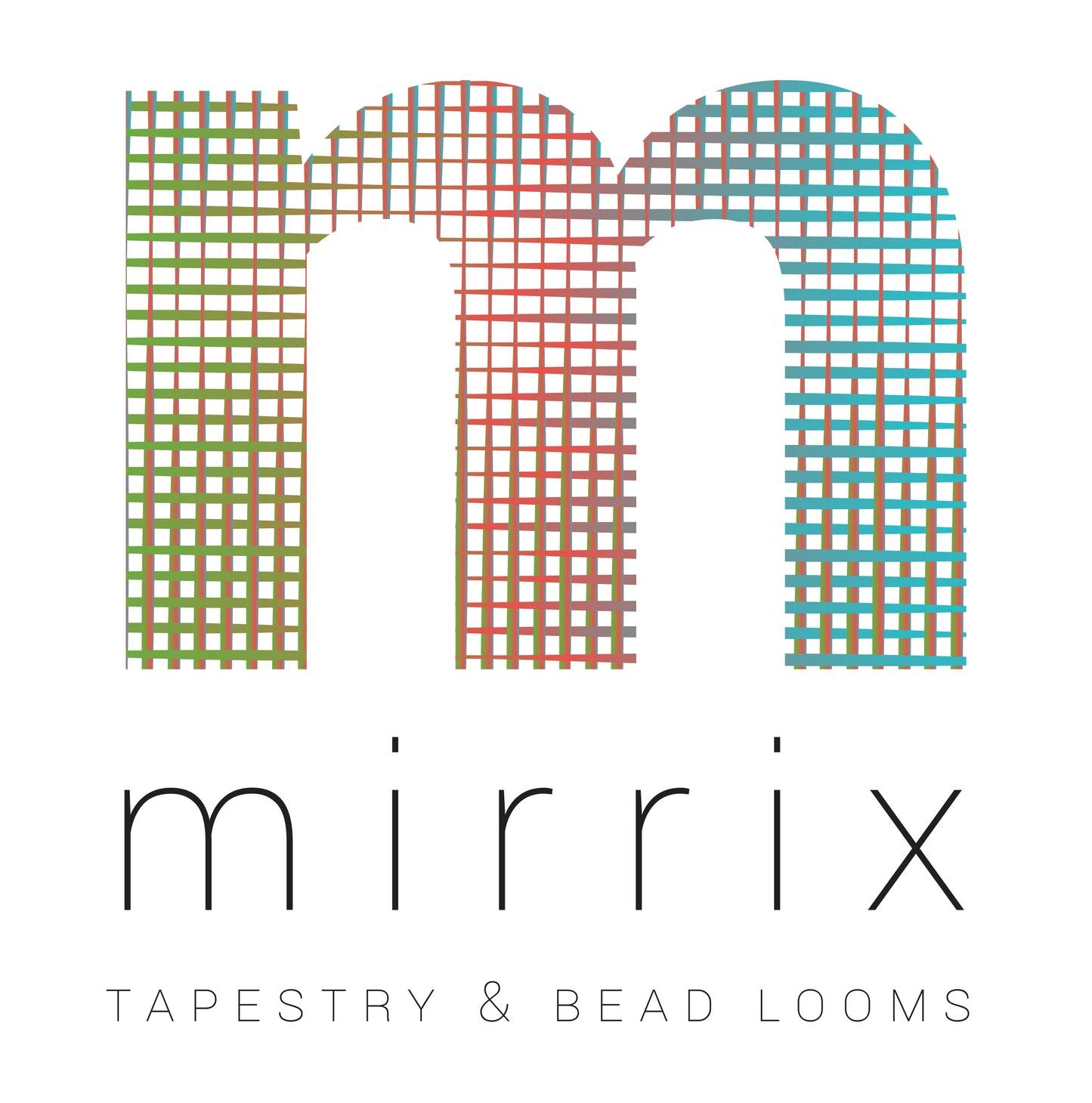
Someone asked a question the other day that I thought warranted a blog post: "What's the difference between tapestry and weaving?"
The simple answer is this: Tapestry is TYPE of weaving.
Someone asked a question the other day that I thought warranted a blog post: "What's the difference between tapestry and weaving?"
The simple answer is this: Tapestry is TYPE of weaving.

Here are a few definitions to help clear things up:
Weaving: Weaving is the action of interlacing threads. Weaving consists of warp (vertical threads) and weft (horizontal threads), but can take many forms. Cloth, scarves, tapestry wall-hangings and rugs can all be woven.
Weft-Faced Weaving: Whether or not the weft, warp or both the weft and the warp show in a weaving is important to distinguish different weaving types. Tapestry is weft-faced weaving. This means the wefts (horizontal threads) show but the warp does not. Weft-faced weaving tends to be stiffer than other types of weaving and is usually meant as decorative and not wearable art. Most woven wall-hangings are weft-faced weavings.
Tapestry Weaving: Tapestry weaving has a pretty strict definition, but most people would consider the majority of weft-faced weavings to be tapestry weavings.
1. Weft-faced
2. Has discontinuous wefts. This means that the weft is not woven from selvedge (edge) to selvedge as one would weave a piece of cloth. Instead, areas are woven up in sections.
3. Pictorial. Tapestries are patterned or pictorial.
I invite you to check out the American Tapestry Alliance website to learn more about, and see examples of, tapestries.
If you're interested in weft-faced or tapestry weaving (or bead weaving) and are wondering which Mirrix Loom might be a good fit for you, fill out this quick form to get a free and personalized loom recommendation!






